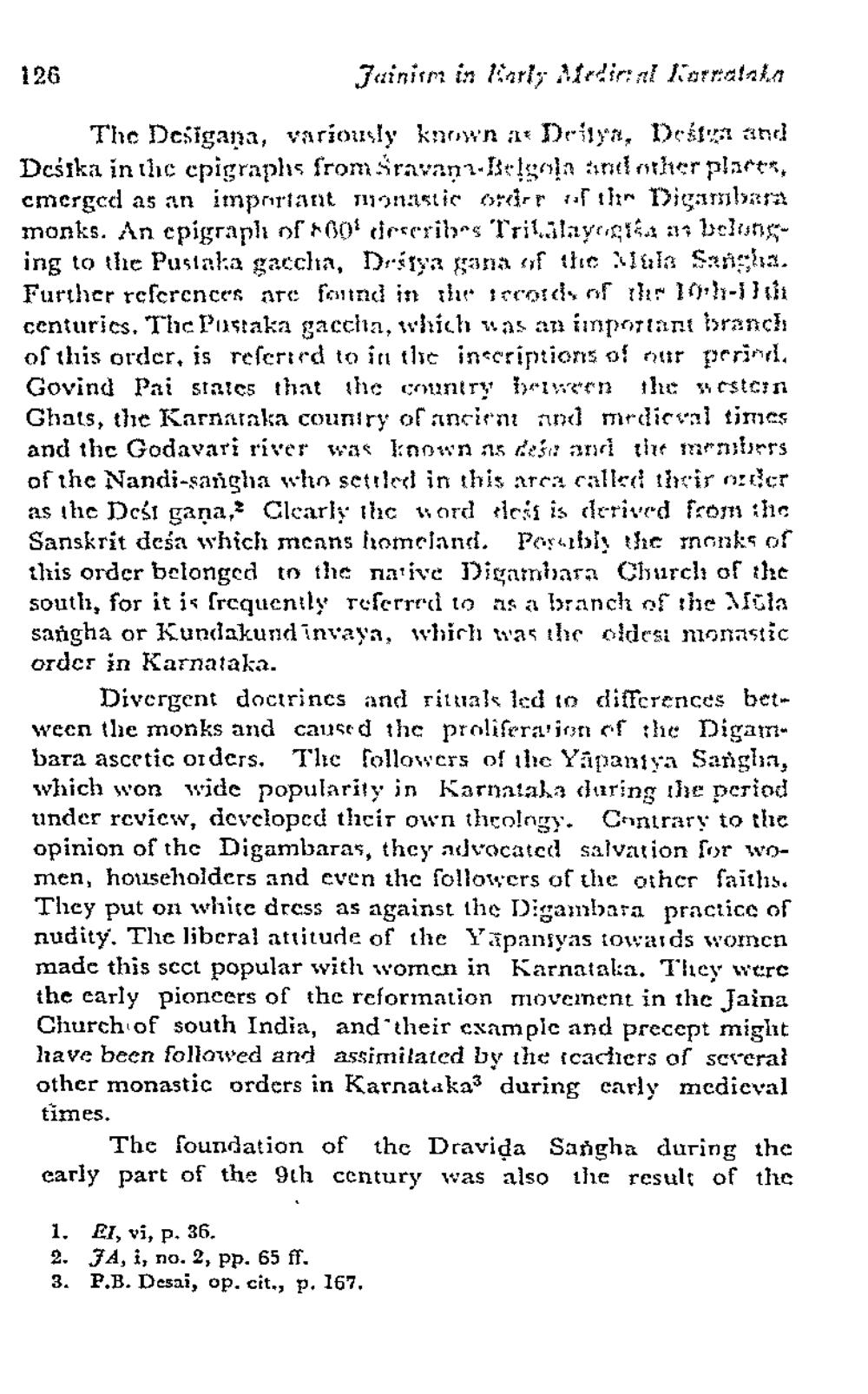________________
126
Jainism in Kris Ardir al lurrainn
Thc Desigana, variously known 4* Drilyn, Det and Dcśíka in thc cpigraphs from siravanı-Blon and other platt*. cmcrgcd as an imprrtant monastic order tofilin Dicarilyn monks. An cpigraplı of00cirserilas Tritilayeta 217 bcunsing to the Pustaka gaccha, Dustya sana sıf the 19la Sanma. Further references are found in the irrords of the 10:11-1} dit centuries. The Pustaka gaccha, which was an important branch of this order, is referird to in the inscriptions of our prrini Govind Pai states that the country triven the western Ghats, the Karnataka country of ancient and mrdic al times and thc Godavari river was known as 225an tire m ulris of the Nandi-sarigha who settled in this area called their ozdce as the Desi gana,? Clcarly the word rest is derived fron :ic Sanskrit deśa which means liomciand. Porubly fic inanks of this order belonged to the native Digambara Church of the soutlı, for it is frcquently referred to as a branch of the litla sangha or Kundakund invaya, which tras the oldest monastic order in Karnataka.
Divergent doctrines and rituals led to differences between the monks and caused the prolifera'jrın of the Digan. bara ascetic orders. The followers of the Yápaniya Sariglia, which won wide popularity in Karnalaha during the period under rcvicw, developed their own thcology. Contrary to thic opinion of the Digambaras, they advocated salvation for women, householders and even the followers of the other faiths. They put on whicc dress as against the Digambara practice of nudity. The liberal attitude of the Yripanfyas towards women made this scct popular with women in Karnataka. They were the early pioneers of the reformation movcinent in thc Jaina Church of south India, and their csampic and precept might have been followed and assimilated by the (cachers of screral other monastic orders in Karnatakay during carly mcdicval times.
The foundation of thc Dravida Sangha during the carly part of the 9th century was also the result of the
1, 2. 3.
E1, vi, p. 36. JA, i, no. 2, pp. 65 ff. P.B. Desai, op. cit., p. 167.




